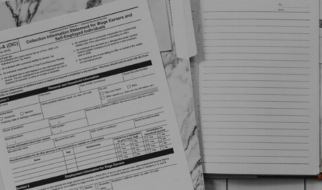
Accounts payable, probably the term you have heard most often but wonder what it is all about, or if you are looking to use one for your business but not sure which ones to choose, then fear not, you are on the right platform.
- What Is Accounts Payable?
- Types of accounts payable
- Processes involved in accounts payable
- Risks Involved in accounts payable
- Benefits of using accounts payable software.
- Conclusion
Accounts payable is money owed by businesses that have an obligation to pay off to its vendors or employees and appears as a liability on the company’s balance sheet. Accounts payable also refers to the department that is responsible for making such payments.
The main purpose of accounts payable software is to track the spending behavior of the organizations and how businesses pay for the costs incurred. Accounts payable includes the policies and procedures that govern such spending, and analyze the data associated with it.
Types of Accounts Payable
In any organization, there are 3 types of business payments that take place.
- Procurement – It is a process of buying goods or services in an organization, involving a series of activities and processes. Organizations will have systematic activities & process that allows them to procure goods or services from external vendors at a lower cost. It includes a number of steps such as raising a purchase request, validation & approval of the request, releasing purchase orders, etc.,
- Employee Payroll – Every organization will have a human resource department which is responsible for calculating amounts owing, and dealing with employees who joins or leaves the organization. Employees will receive a wage or salary slip showing their pay and any deductions for tax etc.
- Employee Travel & Reimbursements – Employees who are required to travel outside of your organization for business purposes end up spending a part of their own money either for travel & stay or for a lunch meeting with customers. All of them record their spending details and submit it to the finance team to get the total amount spent reimbursed. This usually happens via sending receipts through emails addressing to the finance managers for the approval. In case any of the expense is not approved by the finance manager, it won’t get processed. Employees get this amount along with their end of the monthly salary or on a particular date in a month.
Processes involved in accounts payable
Each of the organizations has their own customized way of accounts payable process. However, the general practices are listed below
Manual Process – They are very much time-consuming and are prone to costly errors. It requires high attention to detail and an increase in volume can overload a manual accounts payable process, resulting in compliance issues, invoice matching errors, an error during month-end book closures
- The accounts payable process begins when the invoice is received by the finance department for any goods or services that are delivered.
- After receiving these invoices they are verified against the goods or service that is delivered.
- Upon receiving the confirmation about the same from the respective department, the payment for the invoice has to be approved.
- Before processing the payment, the finance team checks whether the invoice is under the organization financial compliance and other policies.
- Next, the invoices are manually typed into an accounting system, and a physical copy is maintained for auditing purposes.
- After all the above mentioned is completed, the payment is then processed to the vendor.
Automated Process – Automated accounts payable system can create a simpler process, more accurate, and highly efficient. It helps in reducing the business payment cycle, governs the financial policies, automates the approval mechanisms and the record is stored in a digital archive and make the entire process paperless.
When the invoice is received, the system checks each line item against the purchase order and receiving information to be sure that the goods and services ordered are the same as the items received and billed. If an error is found, an alert is sent to the accounts payable department for verification. Automated emails can be set up to remind for the pending approval, processing payments thereby avoiding the delay. Automatic three-way matching can take place against the purchase orders to invoices to verified delivery slips, and thus keeping your accounting systems up-to-date.
Risks involved in accounts payable
When procuring any goods or services to your organization, you need to get it done carefully as it comes at a certain risk. If one purchase goes wrong, it can hamper your brand value within the organization. Anything that is purchased for the organization must be thoroughly evaluated from multiple stakeholders with a proper vendor evaluation method. This ensures you to get the best deal for the company by spending a marginal amount.
- Repetitive Tasks – Finance teams are involved in the monotonous and laborious tasks every day. They keep on doing the data-entry work multiple times and go through a huge stack of paperwork to match receipts, invoices, purchase orders, etc.,
- Fraudulent Invoices – Any business transaction that is processed without a proper validation could also result in the payment of duplicate or fraudulent invoices, unwanted purchases allowing organizations to spend more than to cut costs.
- Improper Communication – Often the finance team will have to communicate with multiple stakeholders within the organization for validating the purchase request raised. Any miscommunication around the number of items that are being procured, delivery timelines, invoice mismanagement, can damage the reputation of the company.
Benefits of using accounts payable software
Accounts Payable automation helps the organization to streamline & automate business spending. It enables the finance team to make better data-driven decisions by providing them with actionable insights.
- Avoid Fraudulent Errors: With an automated accounts payable system, you can minimize fraudulent money transfers, theft, or costly errors. Add additional security layers by scheduling a one-time set up of recurring payments, requiring more than one person to authorize a payment, email or SMS notifications for every payment made, etc. will help reduce the risk factor involved in payments.
- Establish Governance & Compliance – Setup advanced approval hierarchies and multi-stage approval workflow to process any purchase orders or invoices. Implement robust protocols and accounts payable procedures to categorize and automatically approve certain types of requests made by specified people to streamline the approval process.
- Automatic Reconciliations – Any purchase order raised through the automated system, is automatically mapped against the invoice received. Multiple other data points such as the delivery of the product, payments & E-Way Bill are auto-mapped against the purchase order.
- Business Payment Automation – When a payment is processed through the system, a transaction ID gets generated. It automatically captures and gets mapped against the invoice so that three-way matching happens in real-time and payment trail can be tracked at any instant.
Conclusion
The benefits that CFOs can see after moving to FinlyFinance are the improved accounts payable, governance, streamlined processes, total control on budget spend, increased productivity, effective communication, and collaboration, faster invoice processing, and the minimized risks associated with routine invoice payments. This yields to a better relationship with vendors by allowing them for preferred service and better deals.




Terpercaya
I am really happy to read this web site posts which carries lots of vaⅼuable data, thanks for providing such information.